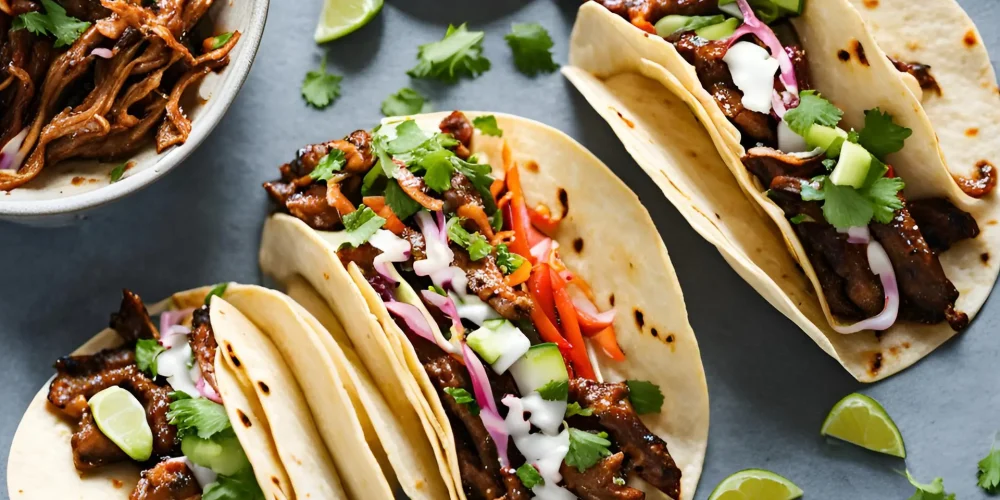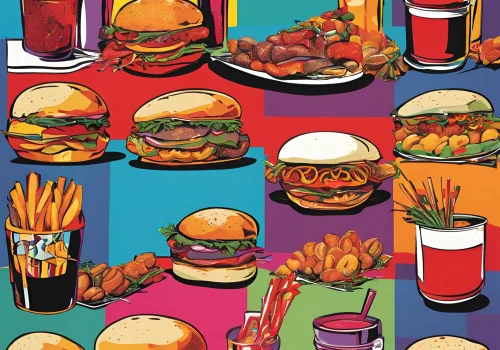
The Evolution of Hip Hop Dance & Street Food Culture
September 1, 2024 - ISSUE 8 - VOLUME 1

Welcome back to "Taste Music. Hear Food."!
This week, we’re diving into the dynamic world of hip hop dance and the global phenomenon of street food. Let’s explore how these two vibrant cultural elements have evolved and influenced each other!
Hip Hop Highlight:
The Evolution of Hip Hop Dance
Hip hop dance has its roots in the streets, where it began as an expressive outlet for urban youth. The early 1970s saw the rise of breaking or b-boying/b-girling) in the Bronx, characterized by its acrobatic moves, intricate footwork, and powerful freezes. As hip hop culture spread, so did its dance styles, leading to the development of popping, locking, and krumping.
Each style of hip hop dance carries its own unique flavor and history. For example, popping and locking originated on the West Coast, while krumping emerged in Los Angeles as a form of street dance that combines expressive, exaggerated movements with a sense of raw emotion and energy. Today, hip hop dance is a global phenomenon, with dance crews and competitions showcasing the incredible talent and creativity of dancers worldwide.

Food Fact: The Global Phenomenon of Street Food
Street food has been a part of human culture for centuries, offering quick, delicious, and affordable meals to people on the go. From the bustling markets of Bangkok to the food trucks of Los Angeles, street food reflects the diverse culinary traditions of its region.
Some iconic street foods include Mexico’s tacos, India’s chaat, Japan’s takoyaki, and Italy’s gelato. Street food vendors often use fresh, local ingredients and traditional cooking methods, making their dishes a true representation of their culture. The popularity of street food has only grown in recent years, with food festivals and markets celebrating this vibrant and accessible form of dining.
Connection: The Origins of both hip hop dance and street food
Both hip hop dance and street food share humble beginnings in urban environments. They emerged from a need for self-expression and community, offering a way for people to connect and celebrate their culture. Just as hip hop dancers use their bodies to tell stories and express emotions, street food vendors use their culinary skills to share their heritage and flavors with the world.
Both art forms are characterized by their creativity, adaptability, and accessibility. They bring people together, whether it’s through a dance battle or a shared meal, and continue to evolve while staying true to their roots.

Recipe: Korean bbq tacos
Ingredients
1 LB THINLY SLICED BEEF (SUCH AS RIBEYE)
1/4 CUP SOY SAUCE
2 TABLESPOONS BROWN SUGAR
2 TABLESPOONS SESAME OIL
2 CLOVES GARLIC, MINCED
1 TEASPOON GRATED GINGER
1 TABLESPOON RICE VINEGAR
1 TABLESPOON GOCHUJANG (KOREAN CHILI PASTE)
8 SMALL CORN OR FLOUR TORTILLAS
1 CUP SHREDDED CABBAGE
1/2 CUP JULIENNED CARROTS
1/4 CUP CHOPPED GREEN ONIONS
2 TABLESPOONS SESAME SEEDS
1/4 CUP KIMCHI
LIME WEDGES FOR SERVING
Instructions
- In a large bowl, combine the soy sauce, brown sugar, sesame oil, garlic, ginger, rice vinegar, and gochujang. Add the sliced beef and marinate for at least 30 minutes.
- Heat a large skillet or grill pan over medium-high heat. Cook the marinated beef for about 3-4 minutes per side, or until fully cooked.
- Warm the tortillas in a dry skillet or on a griddle until they are pliable and slightly toasted.
- To assemble the tacos, place a portion of the cooked beef in each tortilla.
- Top with shredded cabbage, julienned carrots, green onions, sesame seeds, and a small amount of kimchi.
- Serve with lime wedges on the side.
Thank you for joining us for another edition of "Taste Music. Hear Food."!
We hope you enjoyed learning about the evolution of hip hop dance and the global phenomenon of street food. Stay tuned for next week’s newsletter, where we’ll explore the significance of hip hop awards and the cultural importance of rice.

Reflective Question:
What’s your favorite street food and how does it connect to your cultural background? Share your thoughts with us!
We’re thrilled to have you on this journey with us. Until next week, keep tasting the music and hearing the food!



Thank you for spreading positivity about the culture and the origins of hip hop . I also love street tacos them my all time favorite especially with the spicy mustard and onions etc. I definitely have to the try the Korean Barbecue joints. Dope article! I love the combination of music and food- Lue OTTi
It is important to put the CULTURE on full display. Hip Hop is by default embedded in to nearly every facet of modern life because it is a way of life, it’s what we do but most importantly how we do it; and guess what? IT’S GLOBAL!
Love me some fish tacos (fried fish only). One of the best I had was in Imperial Beach, CA. Close to the border so no wonder it was beyond on point. Never got one as good as that one again but it is fun trying to find one like it :0)
Ahhh the coveted “White Rhino”!! There is nothing like chasing the reaction of a favorable experience especially when it was unexpected. You may never see that mountain top again but at least you have been there. PS I think I know a guy that can meet & or exceed your best fish taco memories!😉
It’s in point of fact a great and useful piece of information. I am happy that you just shared this helpful info with us.
Please keep us informed like this. Thank you
for sharing.
Hey would you mind stating which blog platform you’re working with?
I’m planning to start my own blog soon but I’m having a hard time making a decision between BlogEngine/Wordpress/B2evolution and
Drupal. The reason I ask is because your design and
style seems different then most blogs and I’m looking for something completely unique.
P.S Sorry for being off-topic but I had to ask!
Hello, yes my site & blog is built in Word Press. The reason it looks different is because the layout is custom made by myself. Good luck.
Hello outstanding website! Does running a blog such as this take a large
amount of work? I have no knowledge of computer programming but I had been hoping
to start my own blog in the near future. Anyhow, should you have any suggestions or techniques for
new blog owners please share. I know this is off topic nevertheless I just wanted to ask.
Many thanks!
Thank you, like anything it does take some work. My suggestion is to find a topic you love and it will flow! Good Luck.